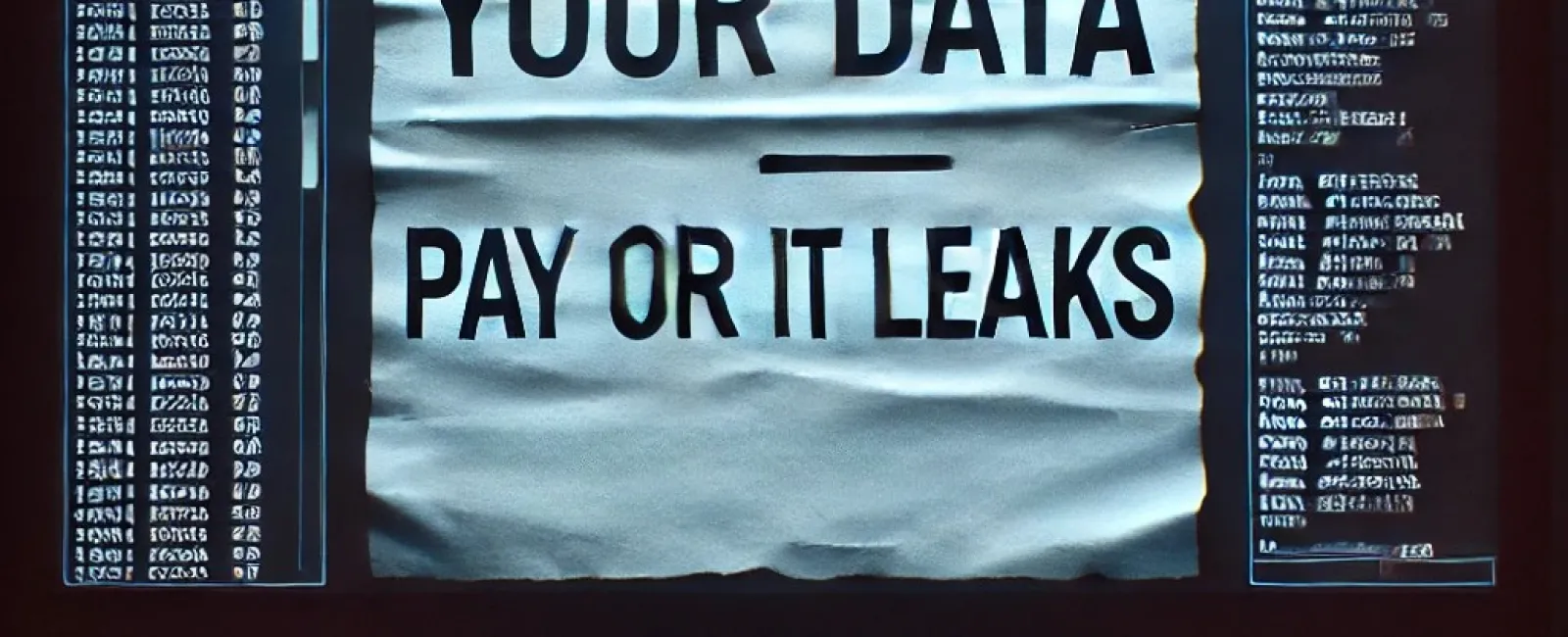April 21, 2025
Think ransomware is your worst nightmare? Think again.
Hackers have discovered a new method to hold your business hostage that may be even more ruthless than encryption. It's called data extortion, and it's changing the rules of the game.
Here's how it works: Instead of encrypting your files, hackers steal your sensitive data and threaten to leak it unless you pay. There are no decryption keys and no file restoration—just the fear of your private information being exposed on the dark web and the consequences of a public data breach.
This tactic is spreading rapidly. In 2024 alone, over 5,400 extortion-based attacks were reported worldwide, marking an 11% increase from the previous year (Cyberint).
This isn't just ransomware 2.0; it's an entirely new kind of digital hostage situation.
The Rise Of Data Extortion: No Encryption Necessary
Ransomware used to lock you out of your files, but now hackers are skipping encryption altogether. Why? Because data extortion is faster, easier, and more profitable.
Here's the process:
- Data Theft: Hackers infiltrate your network and quietly steal sensitive information such as client data, employee records, financial documents, and intellectual property.
- Extortion Threats: Instead of encrypting files, they threaten to publicly release the stolen data unless you pay.
- No Decryption Needed: Since no encryption occurs, they don't have to provide decryption keys, allowing them to avoid detection by traditional ransomware defenses.
And they're succeeding.
Why Data Extortion Is More Dangerous Than Encryption
When ransomware emerged, businesses mainly worried about operational disruption. Data extortion raises the stakes significantly.
1. Reputational Damage And Loss Of Trust
Leaked client or employee data means more than just lost information—it destroys trust. Your reputation can be ruined overnight, and rebuilding it could take years, if it's even possible.
2. Regulatory Nightmares
Data breaches often lead to compliance violations such as GDPR fines, HIPAA penalties, or PCI DSS infractions. Publicly exposed sensitive data invites costly regulatory action.
3. Legal Fallout
Leaked information can result in lawsuits from clients, employees, or partners whose data was compromised. Legal fees alone can be devastating for small and midsize businesses.
4. Endless Extortion Cycles
Unlike traditional ransomware, where paying restores your files, data extortion has no clear end. Hackers can keep copies of your data and threaten you again months or even years later.
Why Are Hackers Ditching Encryption?
Simply put, it's easier and more profitable.
While ransomware attacks are still increasing—with 5,414 reported worldwide in 2024, an 11% rise from the previous year (Cyberint)—data extortion offers:
- Faster Attacks: Encrypting data takes time and processing power, but stealing data is quick, especially with tools that let hackers quietly extract information without triggering alarms.
- Harder To Detect: Traditional ransomware often triggers antivirus and endpoint detection solutions, but data theft can look like normal network traffic, making detection much more difficult.
- More Pressure On Victims: Threatening to leak sensitive data creates a personal, emotional impact, increasing the chances victims will pay. No one wants their clients' personal information or proprietary business data exposed on the dark web.
No, Traditional Defenses Aren't Enough
Traditional ransomware defenses are ineffective against data extortion because they focus on preventing encryption, not theft.
If you rely only on firewalls, antivirus, or basic endpoint protection, you're already behind. Hackers are now:
- Using infostealers to harvest login credentials and break into systems more easily.
- Exploiting cloud storage vulnerabilities to access and extract sensitive files.
- Disguising data exfiltration as normal network traffic, bypassing traditional detection.
The use of AI is accelerating these attacks, making them faster and easier.
How To Protect Your Business From Data Extortion
It's time to rethink your cybersecurity strategy. Here's how to stay ahead of this growing threat:
1. Zero Trust Security Model
Treat every device and user as a potential threat. Verify everything without exceptions.
- Implement strict identity and access management.
- Use multifactor authentication for all user accounts.
- Continuously monitor and validate devices connecting to your network.
2. Advanced Threat Detection And Data Leak Prevention (DLP)
Basic antivirus isn't enough. Use AI-driven monitoring tools that can:
- Detect unusual data transfers and unauthorized access attempts.
- Identify and block data exfiltration in real time.
- Monitor cloud environments for suspicious activity.
3. Encrypt Sensitive Data At Rest And In Transit
If stolen data is encrypted, it's useless to hackers.
- Use end-to-end encryption for all sensitive files.
- Implement secure communication protocols for data transfer.
4. Regular Backups And Disaster Recovery Planning
Backups won't prevent theft but ensure quick system restoration after an attack.
- Use offline backups to protect against ransomware and data destruction.
- Test backups regularly to confirm they work when needed.
5. Security Awareness Training For Employees
Employees are your first defense line. Train them to:
- Recognize phishing and social engineering attempts.
- Report suspicious emails and unauthorized requests.
- Follow strict access and data-sharing protocols.
Are You Prepared For The Next Generation Of Cyberattacks?
Data extortion is here to stay and growing more sophisticated. Hackers have found a new way to pressure businesses into paying ransoms, and traditional defenses aren't enough.
Don't wait until your data is at risk.
Start with a FREE
30-Minute Discovery Call. Our cybersecurity experts will evaluate your current
defenses, identify vulnerabilities and implement proactive measures to protect
your sensitive information from data extortion.
Click here or give us a call at 817-589-0808 to schedule your FREE 30-Minute Discovery Call today!
Cyberthreats are evolving. Isn't it time
your cybersecurity strategy evolved too?






